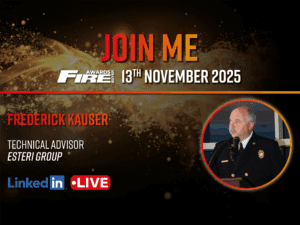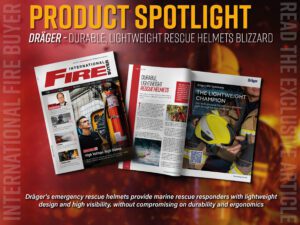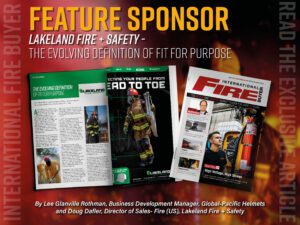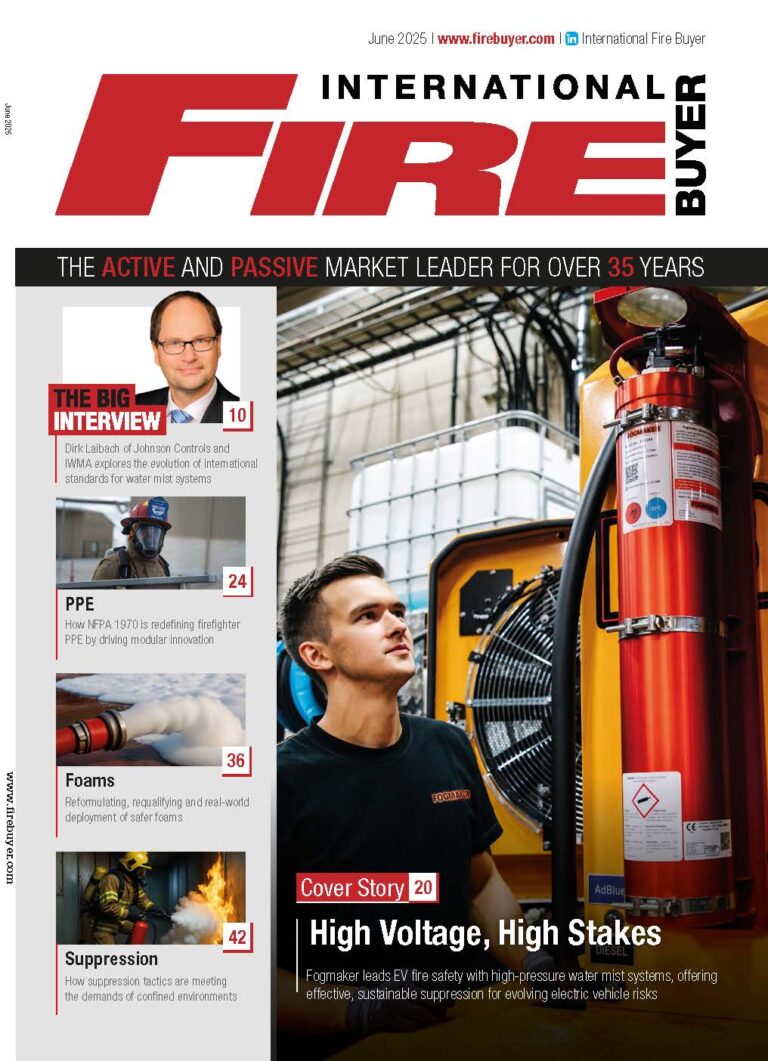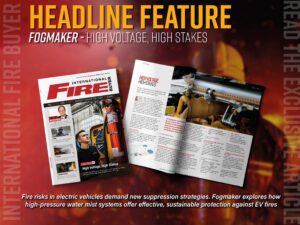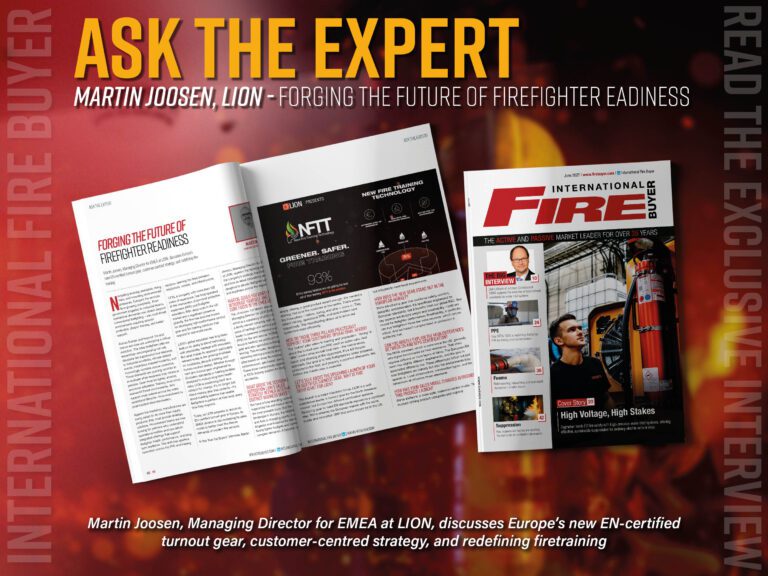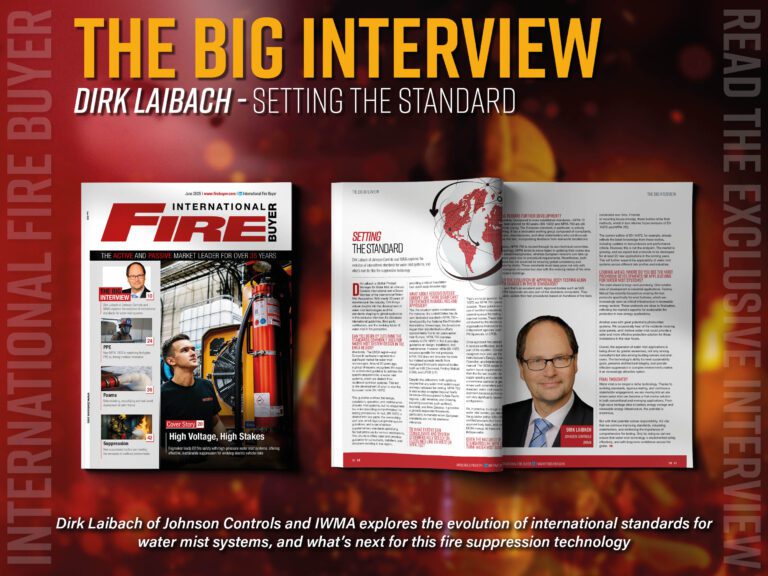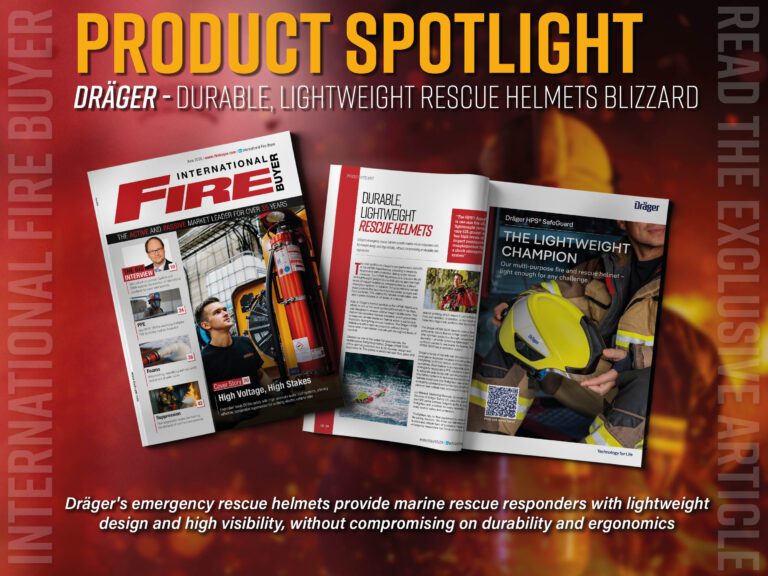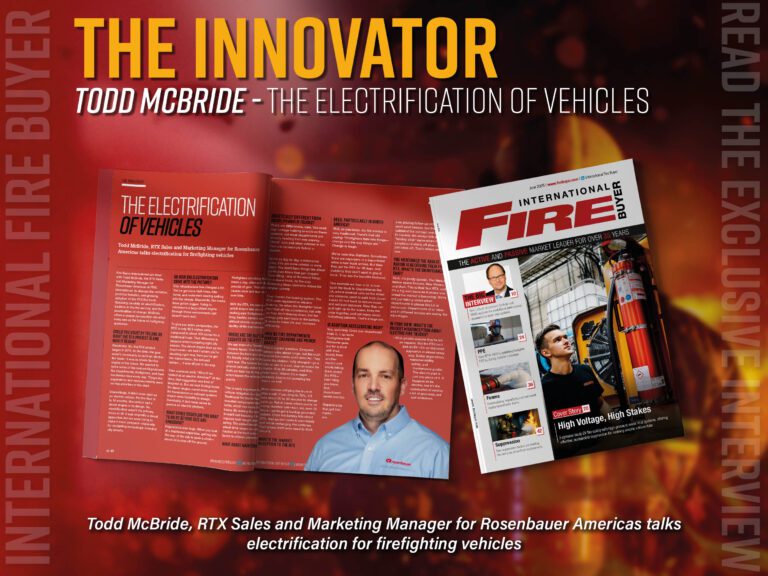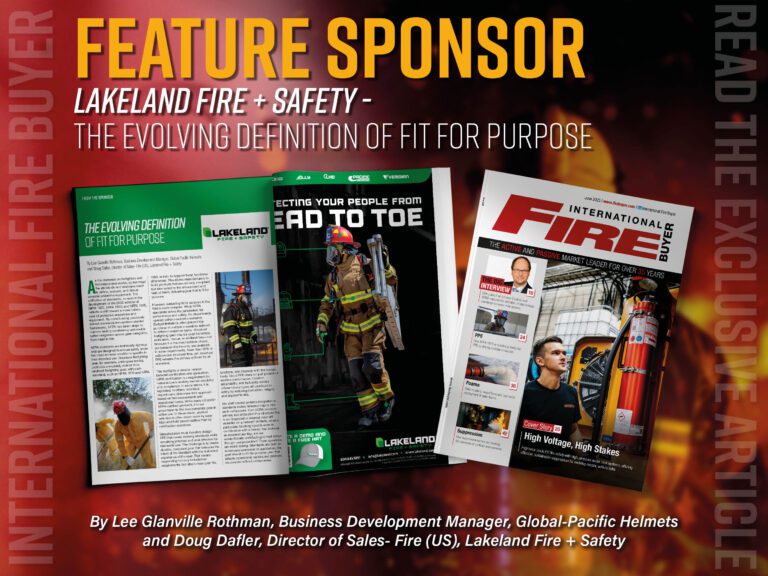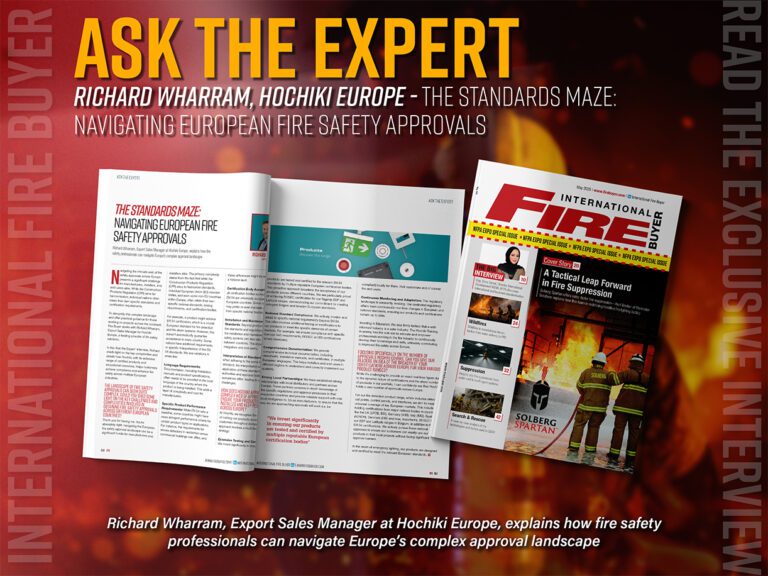Fogmaker International AB has been manufacturing fire suppression systems with water-based mist for machines and vehicles since 1995. With over 300,000 systems installed in nearly 70 countries, the company has extensive experience in managing risk areas in both traditional diesel and gasoline engines and in machines with alternative fuels.
With electric vehicles on the rise, many worry about fires in the battery packs and it is true that extinguishing a battery fire is very difficult. The chemical reactions happen quickly, and the battery casing makes it impossible to reach the blaze. The good news is, it’s rare that a fire starts inside a battery and research presented at the 2023 FIVE conference shows 50-60% of electric vehicle fires never involve the battery at all. Batteries may catch fire because of thermal runaway, but this is rare. There are mainly two reasons for a battery to start burning: collision or an external fire.
No fire suppression system can protect against collisions, but it can protect against external fires reaching the battery pack. A good fire suppression system should target fire initiators to prevent or delay an external fire from affecting the battery and can reduce flames from the battery in the unlikely event of it being on fire.
But, electricity and water is a no-no, right? We’ve all seen the movie where someone is electrocuted by a radio or blow dryer falling into a tub.
Water-mist is not considered electrically conductive. Also, electric vehicles and machines are built to withstand humidity, rain, and road splash. They have a high ingress protection for any high voltage parts. A water-mist system like Fogmaker’s will not penetrate components with an IP-classification of IP66 or higher. And, you need to be part of the circuit to get current through your body, and this means you would have to be in physical contact with both the negative and positive terminals.
Least but not last, the Battery Management System has many safety features to protect from dangerous currents.
Fogmaker’s fire suppression system works with a water-based mist where each single drop of water is split into thousands of droplets. Practically, that means that Fogmaker has a great cooling effect, and this is imperative when dealing with fires in electric vehicles. Fogmaker has decades of experience in detecting and suppressing fires in engine rooms and other enclosed spaces, and the system will provide the best possible fire protection performance if there is an emergency. The system is tailored to each type, make, model, and energy source since they all have different risk areas.
The Fogmaker system deploys when the compartment reaches a certain temperature. At this point, a fine water-based mist fills the compartment, displaces oxygen, and chokes the fire. Fogmaker’s pressurized cylinders ensure the system will work regardless of position – even if the vehicle has toppled upside down – and our patented nozzles divide each drop of water into micro droplets that have a better ability to choke the fire and cool the area than all other methods on the market. Cooling the area is important to prevent a blaze from flaring up again and depending on the application, Fogmaker systems are designed to keep cooling somewhere between 40 and 90 seconds. Environmentally friendly, with the new and 100% PFAS-free liquid, Eco 1.
To read the full article, see our last issue here.
Never miss a story… Follow us on:
International Fire Buyer
@Firebuyer
Fire Buyer
Media Contact
Rebecca Spayne Managing Editor, International Fire Buyer
Tel: +44 (0) 1622 823 920
Email: [email protected]


